
A journey through the spaces of madness in Valencia, over six centuries, through science and the arts.
PRESENTATION
Following in the metaphorical wake of Stultifera Navis (Sebastian Brant, 1494) - one of the major literary works of Renaissance humanism - the La Nau Cultural Centre proposes an interdisciplinary reflection on folly, taking into account the outstanding contribution of Valencian society to the care of this psychosocial phenomenon. Indeed, the Estudi General, the forerunner of the University, also opened its doors in 1499 to culminate the Golden Age of our culture, ushering in the Modern Age from an institution oriented towards wisdom. This fortunate coincidence made possible the meeting of reason and rationality in our country, although it did not take the Inquisition long to impose faith over thought in the face of any dissidence. In the face of such normative omnipotence, the work of the hospitals responsible for assisting deviant individuals may seem insignificant if we do not take into account the permanent interference of the Inquisition.
The present exhibition focuses on the urban itinerary of this ship through the successive scenes where its social and health care took place, which constitute the four stages of the journey up to the present day: the Spital dels Ignoscents, the Hospital General, the Manicomi de Jesús and the Hospital Psiquiàtric de Bétera. It explores the merits of our city to figure since the 15th century among the most advanced in the Christian West in the humanitarian treatment of the alienated, and as a reference for the Spanish kingdoms and European institutions. The exhibition includes extensive documentation preserved from one century to the next, as well as numerous publications, relics, objects and maps that recall some of the architectural remains that have been preserved. A wide range of artistic productions - from painting to cinema, and from architecture to comics - are exhibited to illustrate the faces of the madhouse's madness and the malevolent universe of the insane asylum. Thus, we will illustrate the socio-cultural foundations, which find the most stimulating dialogue between psychoanalysis and artistic avant-gardes in the fertile association of psychoanalysis and artistic avant-gardes.
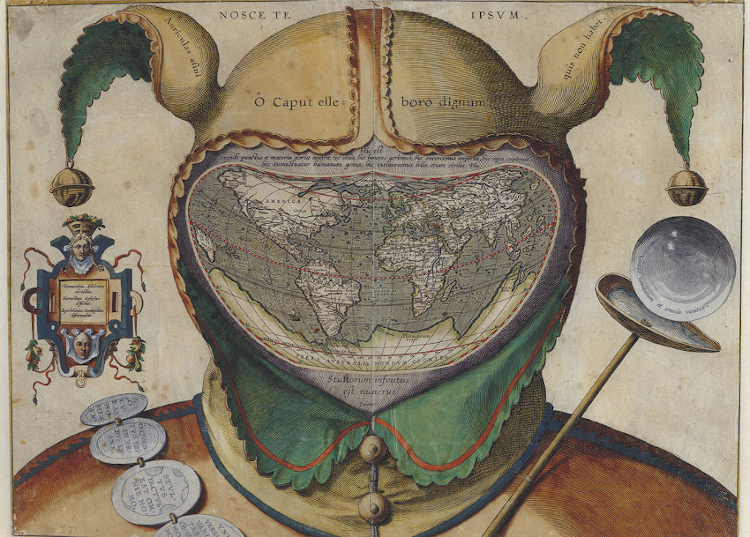
A LONG AND EVENTFUL JOURNEY
From primitive myth to social exclusion (1409-1878)
The founding of the Spital dels ignoscents, folls e orats signified the end of the demonisation of the homeless in order to contribute to their sanctification through the protection of assistance. This is undoubtedly the most important aspect of that exemplary foundation for which the city of Valencia has enjoyed a deserved recognition, as the materials and documents exhibited here prove. However, it is no less certain that the care of the alienated suffered a progressive deterioration during the almost five centuries in which they were kept apart in those Cases de bojos, until their inevitable evacuation from the General Hospital. In this first stage, we give an account of all this, thanks to a reconstruction of its historical evolution through science and the arts.
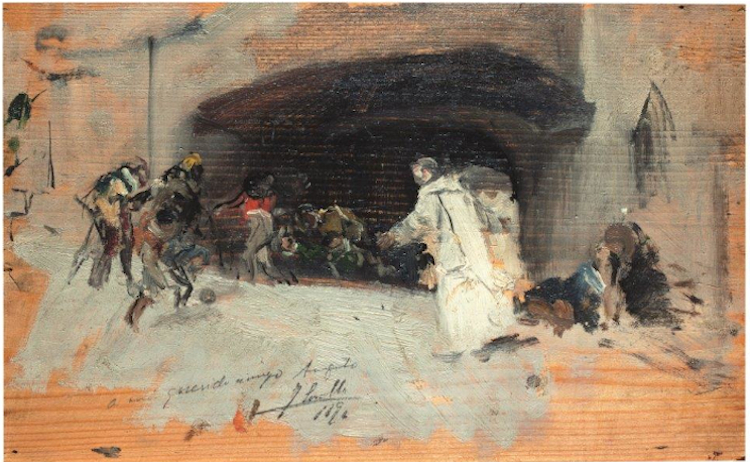
1.
ROWING INTO THE WIND
L’Spital dels Ignoscents (1409-1512)
Before the creation of hospitals for the mentally ill, individuals with any kind of disability or mental illness were under the guardianship of their relatives as long as they were able to care for them, if they did not require greater protection from public institutions. However, there were still no alternative resources for them, which is why many mentally ill people passed through the burgs of medieval Europe along with other subjects who deviated from the norms of coexistence, to the ridicule and rejection of the rest of the population. This ridicule is at the origin of the first senseless nauses that would become very popular in humanist culture, thanks to the literature and painters that have come down to us in chronicles of that period, all of them using folly to reflect on the wisdom of humanity. Also at that time, the marginal and extravagant types, such as lunatics, counterfeiters, lunatics, lunatics, etc., were blamed for any collective misfortune, for which they were subjected to mistreatment and persecution that sometimes culminated in their banishment. Or even to the point of extermination, in the most extreme version of the logic of social exclusion. Magical and superstitious beliefs were the excuse for these ritual exorcisms on specific victims, often ethnic or religious minorities or esoteric individuals, witches and wizards, with the aim of atoning for the ravages of evil. There is also documentary evidence in our milieu of a ship without a course, carrying passengers on pilgrimage so as not to go anywhere else; there is also a marginalised barbarity in the pages of Jaume Roig's L'Espill, which composes in detail a shimmering chronicle of Valencia in its time. An authoritative opinion, no doubt, given that this doctor and poet had clinical and administrative responsibility for many years at the Hospital dels Innocents, when asylum isolation was definitively imposed.
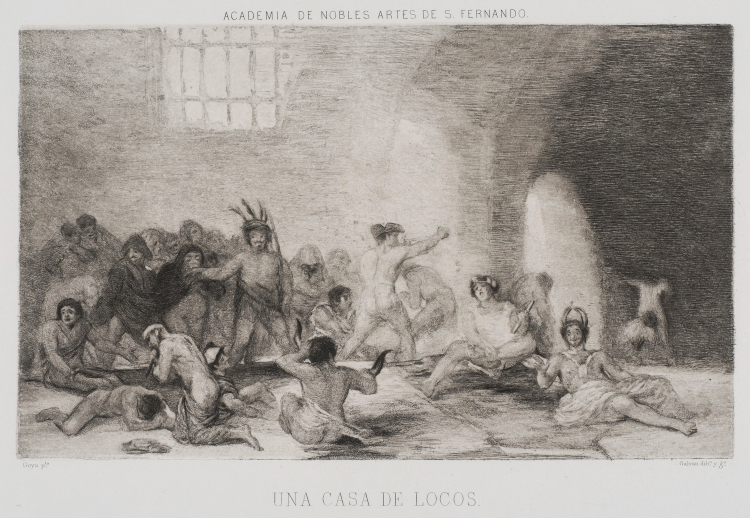
Aiguafort, 31,5 x 44,8 cm. Museo de Bellas Artes de València
1.1.
THE FOUNDING MYTH
It was not until the first Maristans of the Muslim era that significant changes could be seen in the care of alienated people, in accordance with the charitable precepts of Islam, which were later incorporated by Christian hospitals dedicated to mental illness. Precisely, the city of Valencia enjoys a well-deserved international recognition for its outstanding contribution to the humanisation of the treatment of the sick, starting with the pioneering foundation of the Spital dels Ignoscents, folls e orats, which is considered one of the first homes for the sick in the western world. What better than to exhibit the founding documents that have been closely guarded for more than six centuries, to ponder the scope of that decisive historical moment that soon had the support of the Crown of Aragon and the Vatican. The famous Lenten sermon delivered by the Mercedarian friar Joan Gilabert Jofré on 24 February 1409, where we can already find the main ideas that inspired the creation of that celebrated establishment:
En la present ciutat ha molta obra pía e de gran caritat é sustentació empero una ni manca, qu’es de gran necesitat, so es un Hospital ó casa hon los pobres ignoscents é furiosos fosen acullits. Car molts pobres ignoscents van per aquesta ciutat, los quals pasen grans desaires de fam, fret e injuries. Per tal, com per sa ignoscentcia é furor no saban guanyar ni de- manar la que han menester per sustentació de llur vida; é per so dormen per los carrers é pereixen de fam é de fret, é moltes los ulls de sa conciencia los fan moltes inguries é enuchs; é malvades persones no habents deu dabant senyaladamntlla hon es troben adormits los nafren é moten alguns é á algunes mefbres ignoscents aonten. E així mateix los pobres furiosos fan dany á moltes persones anant per la ciutat, é aquestes coses son notories á tota la ciutat; perque sería sancta cosa é obra molt sancta que en la ciutat de Valencia fos feta una habitació é Spitall en que semblants folls e ignoscents estiguesen en tal manera que no anaren per la ciutat ni poguesen fer dany nils ne fos fet…
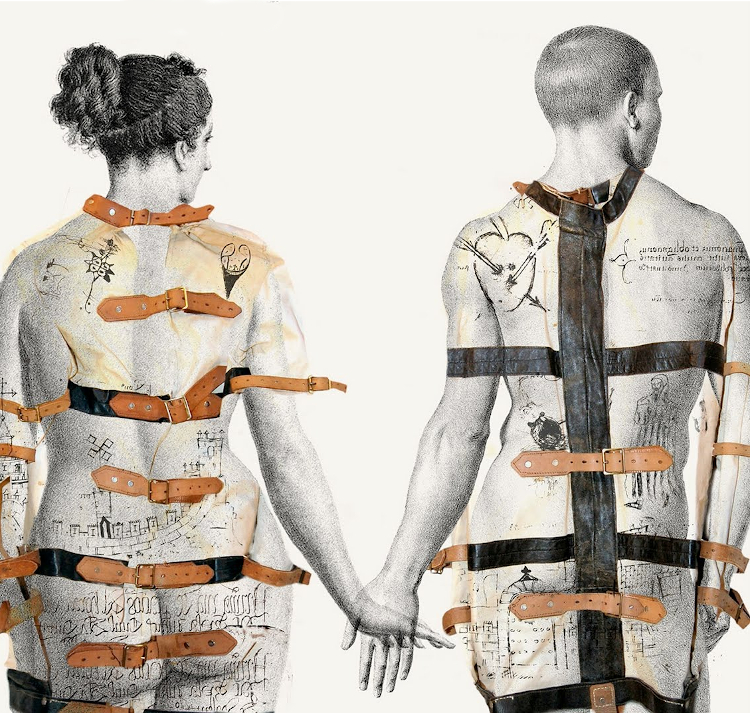
Programació Sagunt a Escena, 2011. Direcció: Antonio Tordera
1.2.
THE SOCIAL CONSTRUCTION OF THE OTHER
Innocent and furious were the first inmates housed in the new asylum institution, which at the turn of the century already housed almost a hundred inmates of both sexes. The innocents would probably enjoy the streets and parishes of great popularity, after being dressed with the signs of identity of the holy house in order to favor the commiseration of the flat people. As for the furious and melancholic ones of different temperament, they were soon recruited among the full ranks of the alterity. Some, like the mystics and the esperitats, composed the most extreme image of a schizoid unfolding, when they felt their own things literally imprisoned by the esperits or dimonis that personalized the other nature. In this way they put an end to the traditional llunàtics, possessors and folls, who already shared their stigma of rejection with that of the other categories of outcasts: Jews and Maroons; Moors and Moorscans; slaves and liberals; beasts, witches, heritors, etc. This varied mixture of diverse Others was thus consolidated as the antithesis of the We that was being built to forge an immaculate identity from the new national State, sanctified by the political and religious unity decreed by the Catholic Monarchs. With the passing of time, the recently born Inquisition will be in charge of designing the profile of the dissidents of the great enterprise, perfecting a whole catalogue of anomalies much more complete than the one managed by the hospital responsible for ensuring normality. And it should not surprise us, if we consider the familiarity with which the inquisitors frequented the establishment.
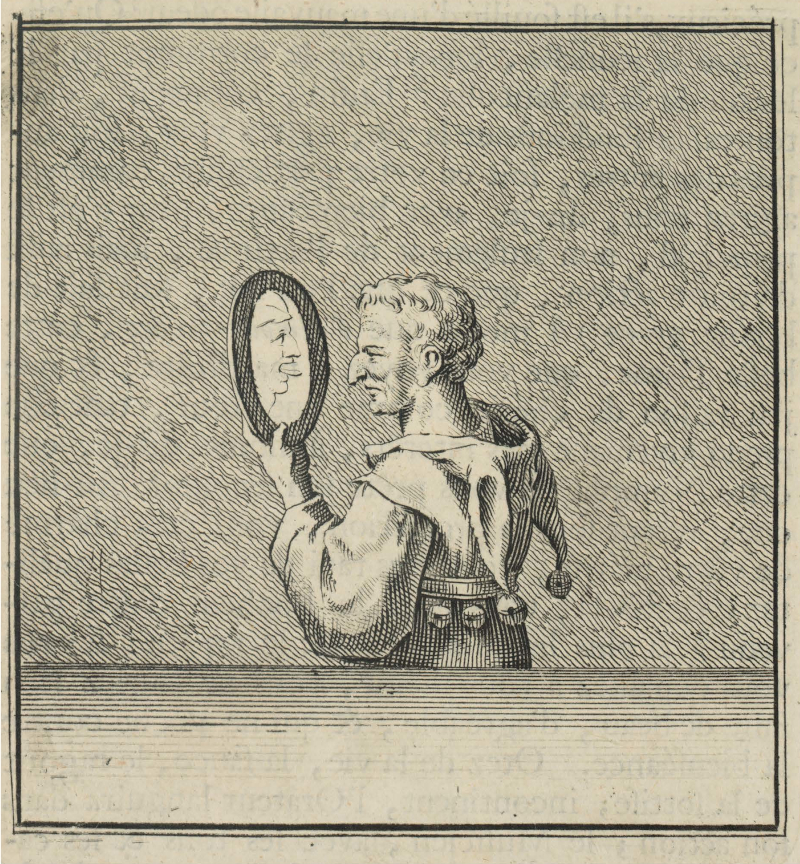
Col·lecció Mariano Moret
2.
A LONG AND EVENTFUL JOURNEY
L’Hospital General (1512-1878)
During the second stop of this journey, the Hospital General, which emerged in 1512 from the readjustment of the previous sanitary network around the Spital dels Ignoscents, played a major role. However, the alienated people who had given rise to the mythical sanatorium did not benefit from the merger, since for almost five centuries they had to remain in the same facilities of the original building. However, their population did not stop growing until it reached a thousand or so interns during the last third of the nineteenth century, when the flooding and hardships determined an irrevocable transfer. Neither did they find a great benefit with their passage from the monastic asylum to the civil hospital of the Renaissance, to which they never had any access, since they were cared for in their own dependencies; unlike the innocents who were selected to work in the services of the establishment. In this way a new added exclusion was imposed, more evident in the case of the furious patients, degraded to a carceral treatment in charge of the synergists Pares de bojos, together with the inmates sent for their observation by the Inquisition.
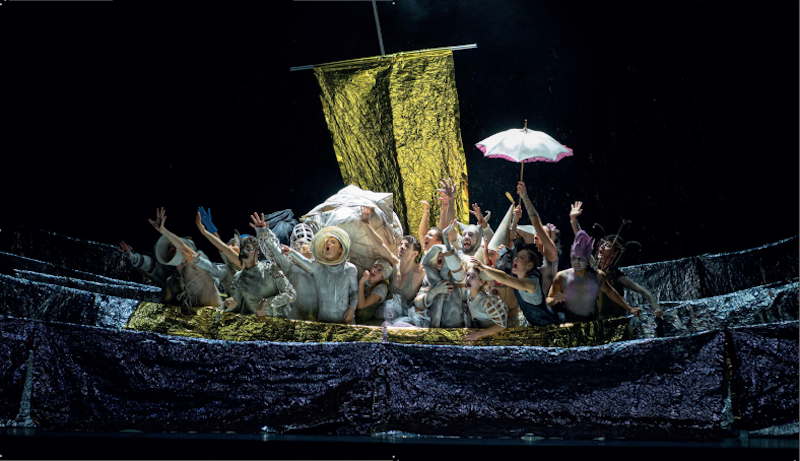
2.1.
THE UPSIDE-DOWN WORLD
As the threatening folly remained in a safe place, the friendlier side of the innocents went from rebellion to festive transgression, acquiring great popularity for their street performances at festivals and carnivals. And above all in the theater, where they found great recognition when they were assigned the role of jesters and men of pleasure, arriving to star in some famous comedies, such as Los locos de Valencia, by Lope de Vega, in a fertile period for the reemergence of the protagonism of the literary jesters.
Of all this, there is ample evidence in the media, very much determined by the socio-cultural upheavals of the sixties, with an ideological impact that also reached Spain during the late Franco regime and the Transition, with particular repercussions in the marginal universe of asylums. In the case of Valencian psychiatry, this conflict had an important social resonance, always conditioned by the particular historical circumstances, as we will try to demonstrate in the following block, easy to reconstruct due to the proximity of the moment.
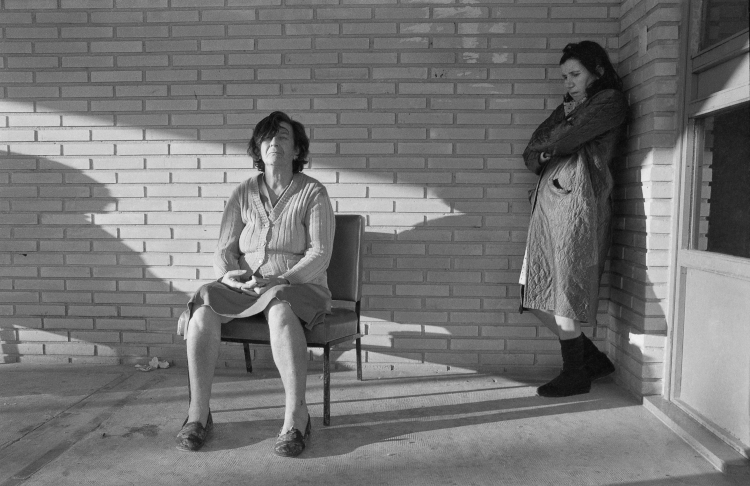
2.2.
MALENCONIA, THE EVIL OF AN ERA
The rabble, previously banished in ships without direction and later confined under iron in gables, soon became part of the daily life of the city as its presence in the meals, in the popular festivities and in the civic processions became normalized. The acedia, or bath of the devil, was very frequent in the retreat of the conventual life, the members of which were prone to mystical ecstasies as well as to diabolical possessions. Such excesses were equally frequent in the beateris, chosen by the parishioners who sought to live their spirituality freely, even at the risk of suffering traumas and slips caused by the female wall. Also lovesickness was one of the most common disorders among the melancholic people of the Baroque, particularly among women subjected to the authority of men, either husbands or confessors -solicitors, a perverse variety of clerical abuse of power. As for male deviations, they were grouped as sodomy in a broad version of the nefarious sin that obsessed the inquisitors among their moral cleansing measures. Melangia, a concept recovered from classical antiquity, was now used to describe the different faces of folly in medical treatises, but also constituted a popular subject of inspiration in the arts and universal literature.
2.3.
BODIES AND SOULS
During this pre-scientific stage, mental disorders were treated empirically, limiting hospitals to satisfying subsistence needs or assuring custodial discipline by means of physical containment resources. The currents based on therapeutic magnetism and phrenological localizations, respectively, eventually converged at the beginning of the 19th century, giving rise to the nascent neuropsychiatric discipline.
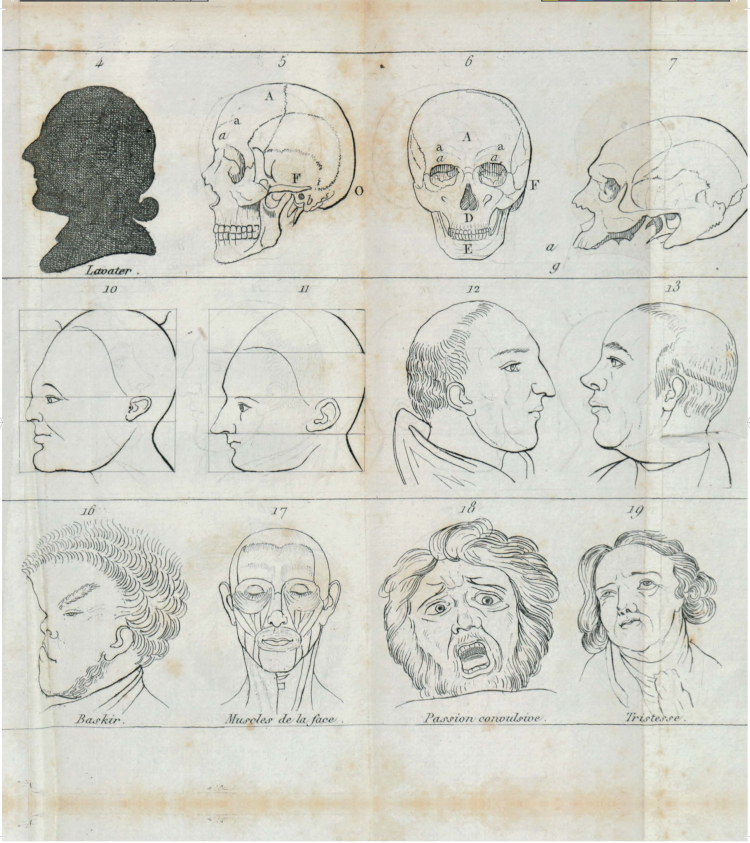
Universitat de València, Biblioteca Historicomèdica Vicent Peset Llorca. HMED Fons Peset 0557
SET OFF AIMLESSLY
The shipwreck of the total institution (1866-2009)
After successive projects to create a Manicomi Model at the height of Valencia's dignified past, the Provincial Council opted for the convent of Santa Maria de Jesus for a provisional transfer. However, the inmates had to endure more than a century of welfare in poor conditions, from the asylum confinement at the expense of charity and beneficence. Only much later would they be taken over by Social Security, although the lack of interest in this area of health could only be corrected with the General Health Law, which in 1986 put an end to its traditional neglect. However, the construction of the Psychiatric Hospital of Bétera -named as the best in Europe- had already experienced a resounding failure when it ran up against the new WHO guidelines, which questioned the hospitalocentric model and opted for community intervention. The asylum is thus a marginal observatory, a faithful testimony of the passage of time from the Restoration to the Second Republic, and from Franco's dictatorship to the democratic transition. Already in our days, the corporate representatives commemorated the "600 years of solidarity" requesting the beatification of Father Jofré, in order to look for in a remote splendor the legitimacy that undoubtedly lacked in the present.
3.
SET OFF AIMLESSLY
El Manicomi de Jesús (1866-1989)
In the middle of the nineteenth century, the situation of the mentally ill had reached its maximum degradation and abandonment, as a consequence of the generalized impoverishment of the country due to the successive wars and the permanent political instability of the Government. After the 1849 Charity Law was passed, the provincial councils of the Elizabethan Administration had to take on these marginal competences by creating some pilot centers, following the French alienists. In this sense, six cities were selected (Madrid, Barcelona, Valencia, Saragossa, Valladolid and La Coruña) with the aim of stimulating the rest of the provinces; but at the end of the century only the madhouse of Leganés in Madrid was in operation. As far as Valencia was concerned, several alternatives proposed by the Department of Dements of the General Hospital were discarded, where about 500 inmates were living in an unstable environment due to the lack of a well-defined project. Finally, they improvised their installation in Santa Maria de Jesus, a 15th century Franciscan convent that had been converted into a silk factory after being disentailed. In 1866 the rehabilitation began with the most able-bodied patients, until a "provisional" transfer was completed in 1878, which turned out to be definitive: the number of patients had tripled a century later, and they still did not move out of the place. Meanwhile, an ambitious colony, an avant-garde sanatorium and a pharaonic complex were planned but were never built; perhaps for fear of facing the challenge of our worthiest past. As for the Innocents' site, it disappeared without any vestiges remaining, in order to build the Faculty of Medicine on its mythical location.
3.1.
BETWEEN CHARITY AND BENEFICENCE: THE MODEL ASYLUM
The renewed asylum institution had begun its emancipation from the General Hospital with a partial autonomy, due to the material precariousness and lack of resources. In practice, the order and charitable habits of the religious women governed, which were not very different from those of the corporate charity. All this hindered the introduction in the sanatorium of Jesus of the medical model and the advances of the brand new psychiatric speciality, born with the new century.
3.2.
DREAMS AND ARTISTIC CREATION
The rapid penetration of psychoanalysis and the early translation of Freud's works were promoted in our country from the Institución Libre de Enseñanza, spreading with great interest from the Generation of the year 27 thanks to the proximity of poets and neuropsychiatrists. Also fruitful was the contact between artists from different disciplines, photographers and filmmakers, motivated by the collective unconscious and creativity from psychodynamic theories. This was already the case in Europe, especially among the surrealism, the Dadaist movement and all the avant-garde movements.
3.3.
THE NATIONAL-CATHOLIC PSYCHIATRY OF THE FRANCO REGIME
The rapid penetration of psychoanalysis and the early translation of Freud's works were promoted in our country from the Institución Libre de Enseñanza, spreading with great interest from the Generation of the year 27 thanks to the proximity of poets and neuropsychiatrists. Also fruitful was the contact between artists from different disciplines, photographers and filmmakers, motivated by the collective unconscious and creativity from psychodynamic theories. This was already the case in Europe, especially among the surrealism, the Dadaist movement and all the avant-garde movements.
3.4.
TOWARDS THE REPUBLICAN REFORM
One of the first measures implemented by the Government of the Second Republic was the Decree-Law of 1931, the legal bases of which protected the rights of the sick and put an end to so many years of excesses and delays, replacing the old asylums with a network of preventive, welfare and rehabilitative services. Unfortunately, the Civil War truncated the renovation of the facilities, causing the massification of the asylums and a serious setback in the living conditions of the inmates due to the paralysis of any reformist alternative.

4.
SHIPWRECK OF THE TOTAL INSTITUTION
Bétera Psychiatric Center (1973-2022)
We arrive at the last stage of our navigation, which is no less convulsive for being contemporary; because if the Manicomi de Jesús was doomed to fail due to improvisation and the lack of means that determined its provisional nature, the Psychiatric Hospital of Bétera was the product of a calculated gestation and it had all the imaginable resources. In fact, it was the welfare project with the largest budget, born in the euphoria of the National Development Plans, and no expense was spared in order to have the best infrastructure and the largest number of resources and staff. However, it started with a very serious miscalculation, as was immediately apparent: when the lavish plan was planned, the large multitudinous institutions had been deprecated by the WHO since the middle of the century. Moreover, the hospitalocentric model had been in disuse due to its therapeutic ineffectiveness, while giving preference to preventive and rehabilitative tasks from community intervention. Any effort of the Diputació de València to carry out this ambitious plan was not so much due to the modern environmental trends that were being argued, but to a corporate delirium that obstinately wanted to build the best known facilities. A self-assertive megalomania that was still based on the idea of the Model Asylum, even though it had been abandoned for several decades.
4.1.
THE OPEN CITY AND ITS ENEMIES
The first years of the Psychiatric Hospital of Bétera, since its opening in 1973, were determined by the difficulties of adapting to the reality of that idyllic construction, which the institutional press and related media were busy promoting with similar enthusiasm. It was the last days of the late Franco regime and the establishment's start-up coincided with the years of the Transition, which was lived on the streets as a cry for freedom, the remainder of which also reached the last corner of the asylums. In spite of the fact that, both in the hospital and in the neighbouring towns, there were still sectors opposed to any kind of opening, in tune with the councils, which were developing immobilist bastions: the bunker barraqueta, according to the name of the time, in the middle of the "battle of Valencia".
4.2.
AGAINST THE CURRENT: PSYCHIATRY AND ANTIPSYCHIATRY
At the end of the 1960s, different countercultural movements and underground collectives coincided with the European and North American revolts of '68, to the point of constituting a social front that integrated numerous revolutionary protests. This youth activism also arrived in our country coinciding with the last years of the dictatorship, integrating the denunciation of asylum violence among the main fields of struggle, which were extended to the abuses of the authoritarian psychiatry. Numerous publications, press, magazines, books and films give account of that cultural explosion, the impact of which fully touched the experience of Bétera, constituting a faithful reflection of the social tensions of the time.
4.3.
THE DISENTCHANTMENT
A few years were necessary to confirm a fact that was much more difficult to accept: what was in crisis was the segregationist and concentrationary model, since the modern psychiatric hospital was not very different from the asylum. It was carried in the appearance of a garden city and in its illusory regime of freedom, which soon came up against reality when the neighbouring townspeople united to demand the isolation of the hospital by means of a wall topped with thorny iron. The logic of social exclusion showed its most authentic face, forcing the Provincial Council to get out of its managerial ambiguity, even more contradictory when the General Health Law was approved. Until it became inevitable to carry out the definitive closing of the Manicomi de Jesús, to start a progressive dismantling of Bétera. In this way the total institution admitted its own failure, which was that of the hospitalocentric model, and the bases were laid to begin the return of the interns to the community.












